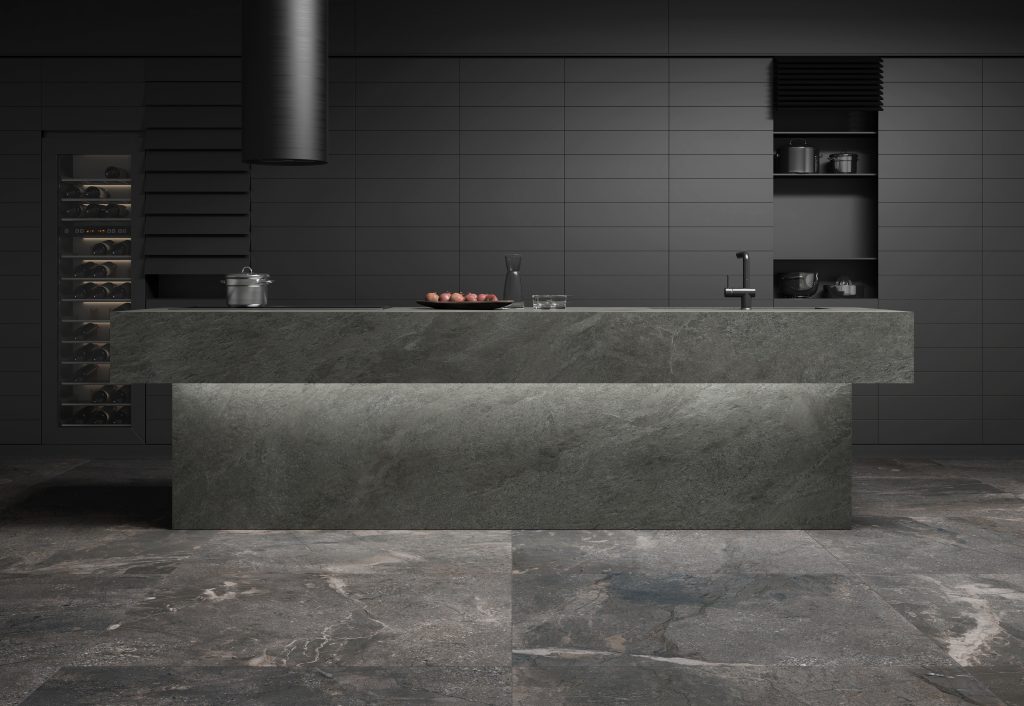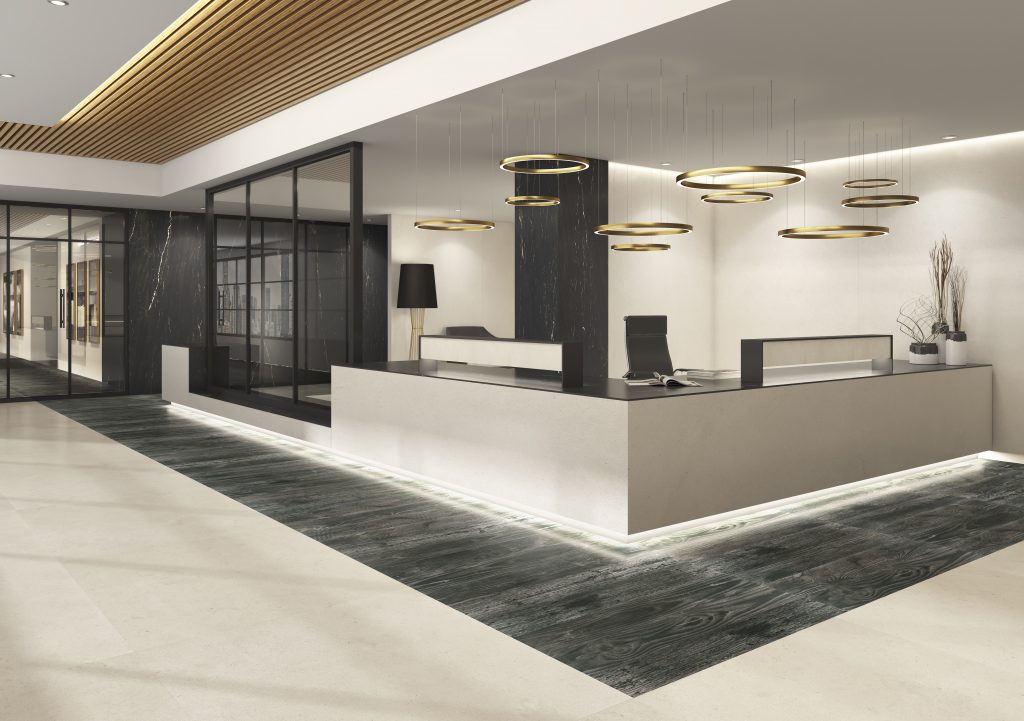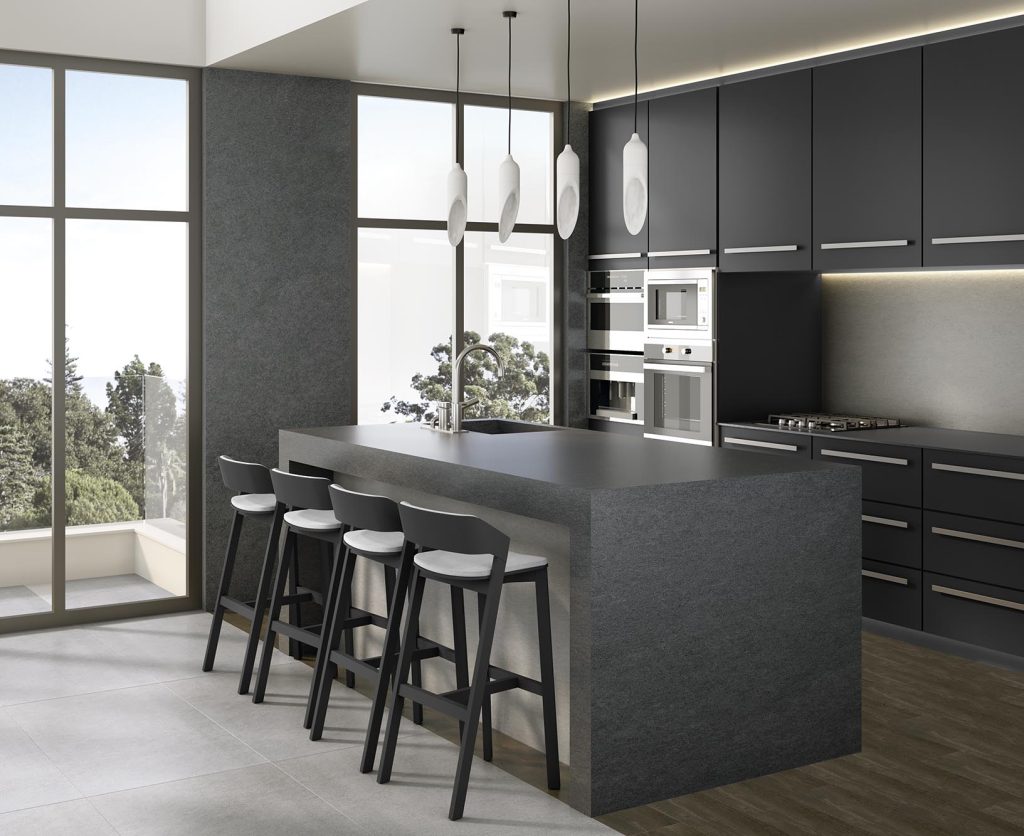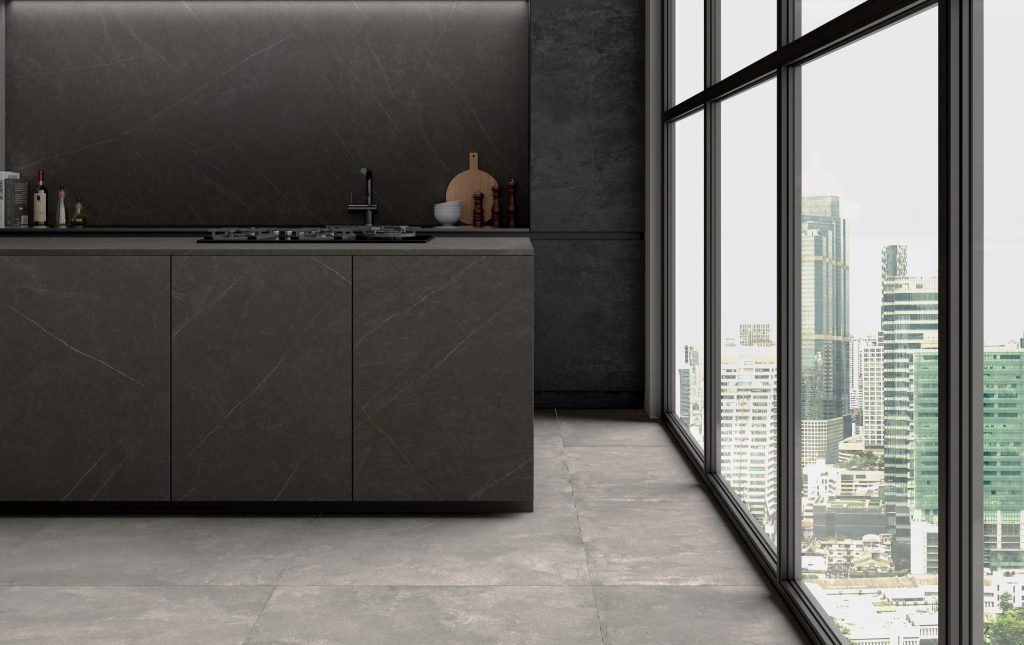Porcelain kitchen countertops have become a favourite among professionals in the renovation sector. This is not surprising, as porcelain is a material that is resistant, hygienic and comes in a wide range of different designs.
In this article, we take a look at the points to consider when choosing between the different types of porcelain for kitchen countertops.
What’s all about porcelain slab countertops?
Porcelain kitchen countertops are all the rage. Why is that? What does this material have to offer compared to marble or wood countertops?
Porcelain countertops are a very resistant large-format piece. At Ascale we work with customised sizes, so we supply countertops without gaps. However, it is a material that lets you make invisible joints.
One of its most important features is that it is a non-porous material. This makes it extremely hygienic and the colours do not deteriorate due to stains from wine or acidic foodstuffs.
Ceramic countertop finishes for kitchen counters
Porcelain for countertops stand out from the rest of the materials that can be used for the kitchen counter, due to their wide range of designs. This is because it is a material that is made from a variety of minerals, which makes it possible to achieve a multitude of colours and finishes.
When selecting a porcelain kitchen countertop, the most obvious thing to start with is to think about the aesthetics that each stone will provide. For example, at Ascale we offer different designs depending on the minerals used in their manufacture: marble, stone, cement or metal.

These four models are joined by two new styles that are far removed from the typical “stone” image associated with stoneware. We are talking about smooth ceramic countertops and those with a design reminiscent of wood.
Although visually these variants break with the texture of the more traditional porcelain stoneware for kitchens, they bring the same advantages. So it is a question of which one we like best.
Finishing touches to porcelain kitchen countertops
As well as choosing which stone we want to use as a kitchen countertop, we should also think about what finish we would like it to have. In other words, what shape we want the edges to be.
Nowadays, it is most common to find porcelain worktops with straight finishes. Either because we are dealing with small rooms or because the budget is limited, this model has become increasingly popular in recent times. As an alternative, there is the option of ordering rounded edges, which soften the lines of the kitchen tops.

However, these are simple finishes. If we want something more elaborate, we can look at the following:
- Half-rounded edges: combining rounded (for the top) and straight (bottom) finishes.
- Bevelled edge: the edge is cut at two different angles, which makes the countertop appear less thick.
- Mitred edge: this consists of finishing the worktop with a flying skirt. This extra piece is usually about 8 centimetres long.
The choice is very personal, as it will make a big difference to the countertop’s final design. If you are not sure, the best thing to do is to ask a professional to show you the different finishes in person.
Porcelain stoneware measurements for kitchens
Once the design of the porcelain kitchen countertop has been chosen, it is time to talk about measurements. When it comes to the width and length of porcelain stoneware, we offer countertops cut in one piece up to 3.20 metres long and 1.60 metres wide. Therefore, you should not see any gaps.
However, it is important to take into account the gaps we are going to need. By this, we mean, for example, if we want to embed the sink and the ceramic hob, or if you would prefer a worktop that includes an invisible cooker.
In addition to these details, there is one last detail: the thickness we want for our kitchen top. Broadly speaking, the thinner it is, the simpler the design will be. But when it comes to taste, nothing is set in stone!

It is important to know that we currently work with up to three thicknesses: 6 mm, 12 mm and 20 mm. However, not all the stones in our catalogue are available in all sizes. Therefore, this is something to check when considering different options.
How much porcelain kitchen countertops cost?
At this point, the only thing left to do is to request a quote for our new porcelain slab kitchen countertop. Naturally, the finishes will make all the difference.
That is why Ascale encourages you to think about several models that fit the style you want to give to your kitchen, and ask for a personalised quote for each countertop.
If we do not have a very clear design, we can always ask a professional to prepare three quotes with the basic premises that we want it to meet. That is, the size of the piece and the colour range for the ceramic countertop. From here, finding a solution for your kitchen is a piece of cake.
